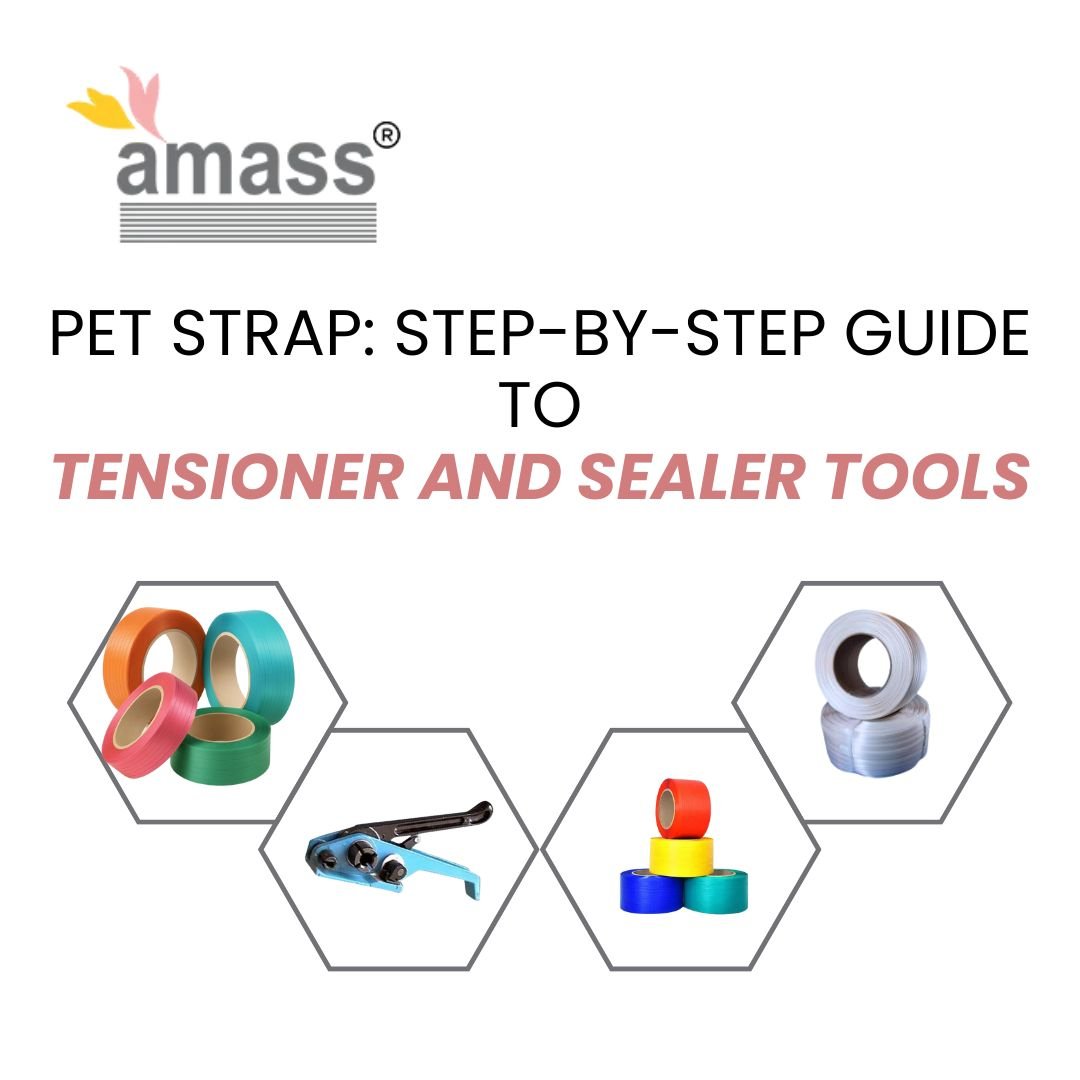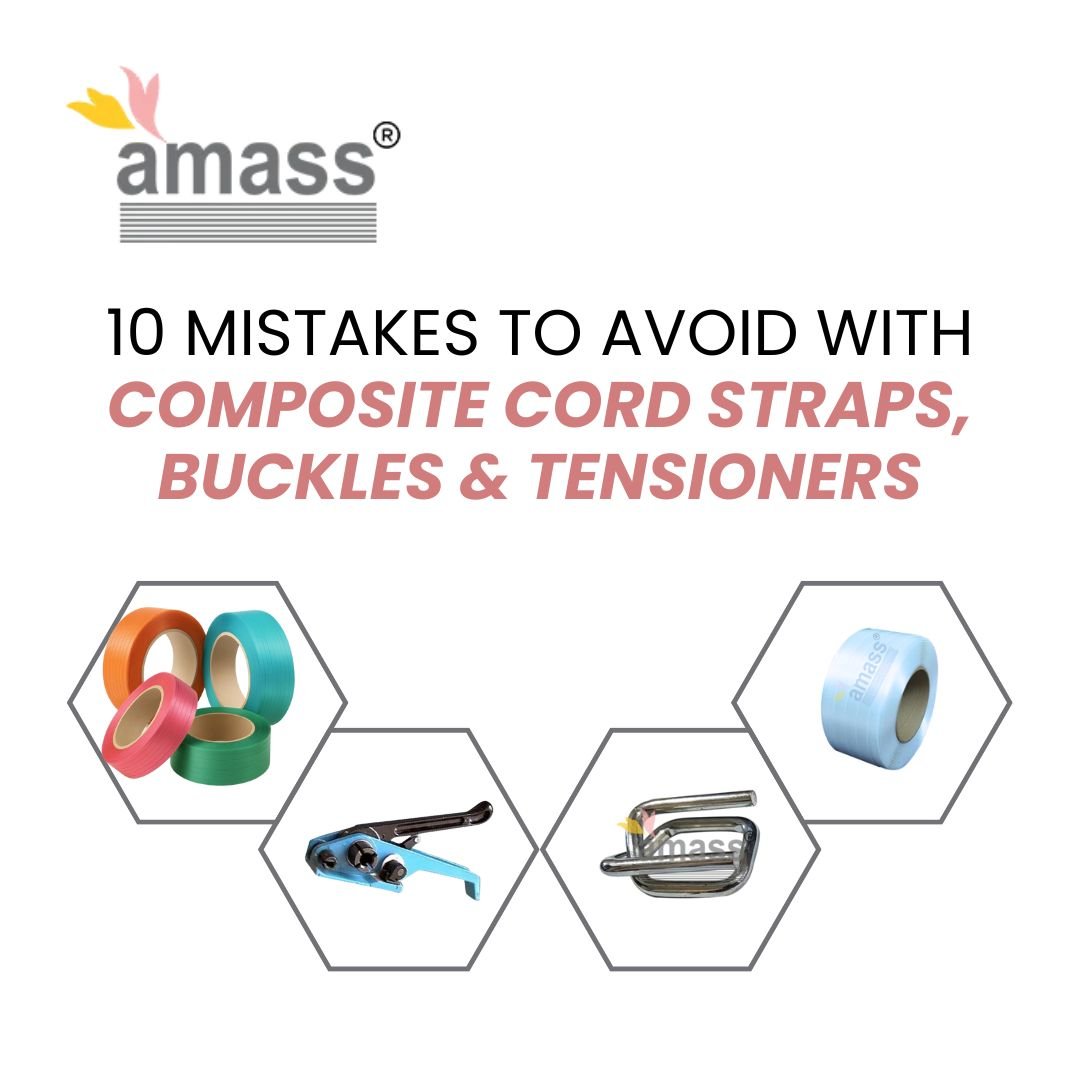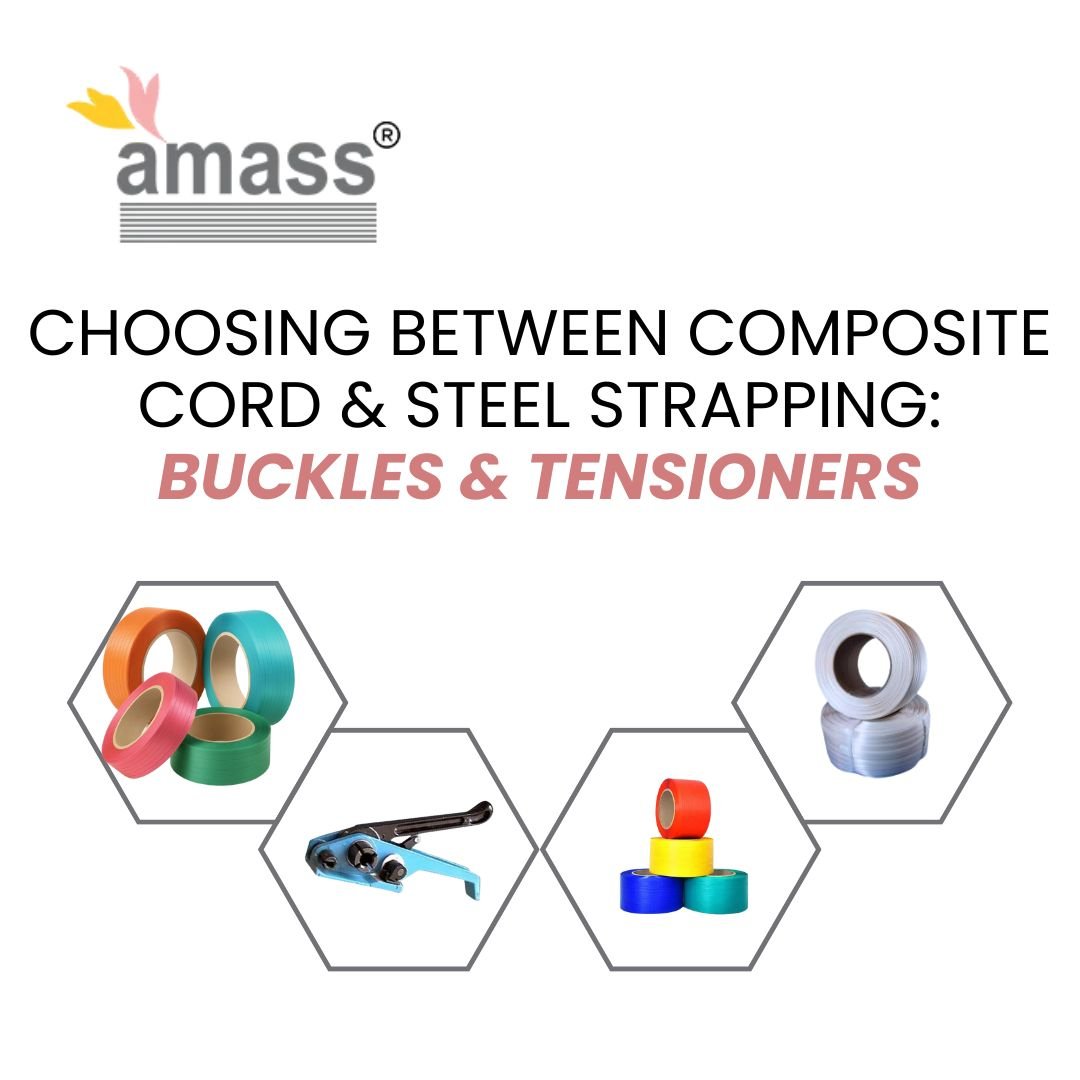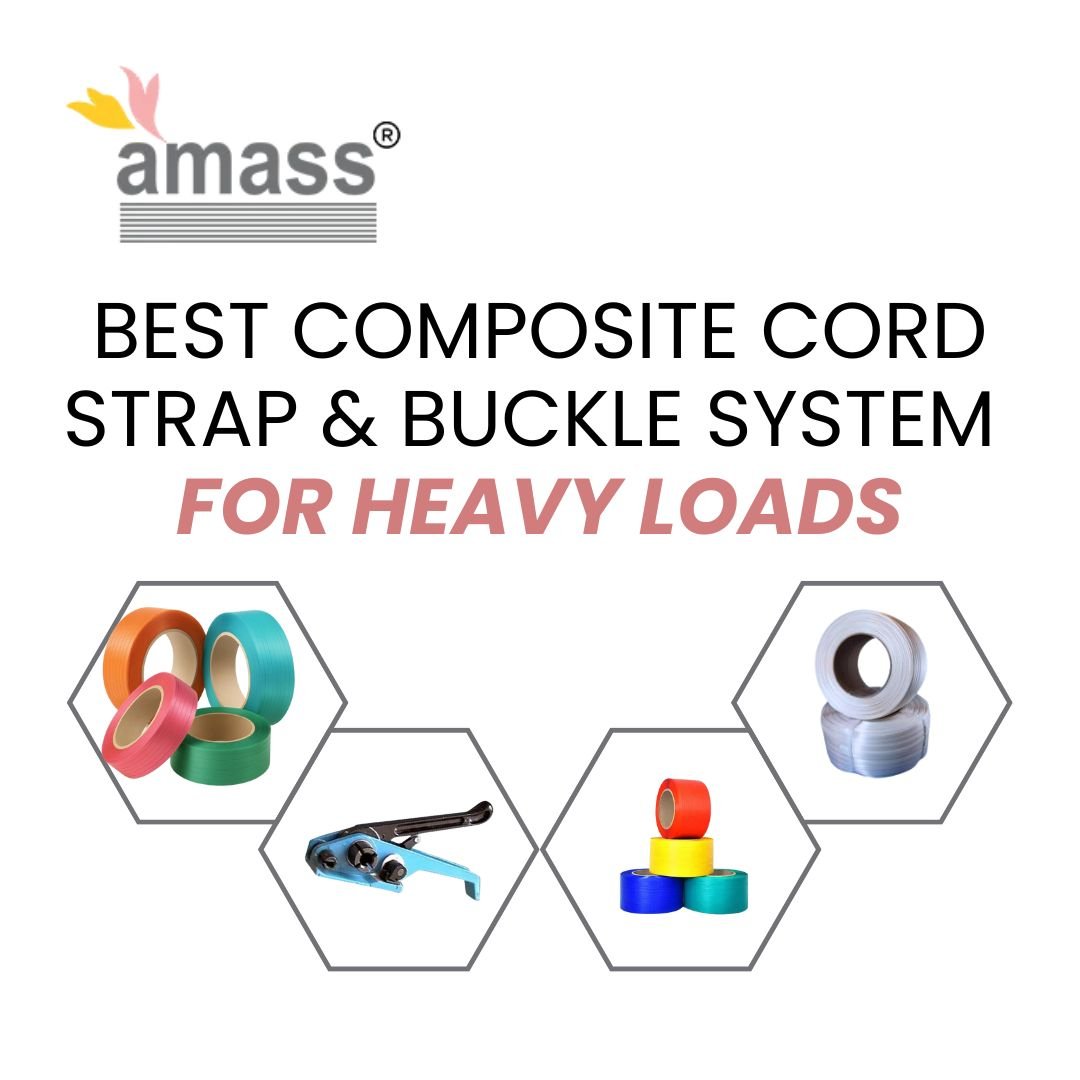PET Strap: Step-by-Step Guide to Tensioner and Sealer Tools
Polyester Strap for Manual Grade Market
November 14, 2025
10 Mistakes to Avoid with Composite Cord Straps, Buckles & Tensioners
November 15, 2025Introduction
Your strapping fails at the worst possible time—mid-transport, after the truck hits rough road, when the load shifts just enough to snap a weak seal. The culprit isn’t the strap itself. It’s improper tensioning, contaminated weld surfaces, or a sealer that hasn’t been calibrated in months. Most operators learn PET strapping by watching someone else do it wrong, then repeating those mistakes for years. This guide walks you through the exact steps to tension and seal PET strapping correctly, explains why the seal is almost always the weakest point in your system, and shows you how to avoid the four most common errors that cause premature failure. You’ll understand tool selection, proper technique, and maintenance habits that keep loads secure from warehouse to destination.
Understanding PET Strapping Basics
PET (polyester) strapping offers high tensile strength, minimal elongation under load, and excellent tension retention over time. It absorbs shock better than steel, doesn’t rust in humid environments, and handles temperature swings from freezing warehouses to hot shipping containers without losing performance. Standard PET strap widths range from 13mm to 32mm, with thicknesses between 0.6mm and 1.2mm. Break strength varies from 1,100 to over 3,000 pounds depending on dimensions. The material elongates 10-12% under working load, which cushions impact without allowing dangerous load shift.
Types of PET Strapping Tools
Manual Tensioners and Sealers
Manual tools require no power source and work well for low-volume operations—under 50 straps per day. The tensioner uses a lever mechanism to pull the strap taut, while a separate sealer crimps metal seals or creates friction welds. These tools are portable, lightweight, and inexpensive upfront, but they demand repetitive hand and wrist motion that leads to fatigue and inconsistent tension.
Battery-Operated Combination Tools
Battery tools combine tensioning, sealing, and cutting in a single unit with two-button operation. They complete the full cycle—tension, friction weld, cut—in under 10 seconds per strap, which is roughly six times faster than manual methods. The battery maintains consistent tension and weld parameters across hundreds of applications, eliminating human error. These tools pay for themselves within six months in operations strapping 100+ cartons daily.
Pneumatic Tools
Pneumatic tensioners and sealers run on compressed air and deliver the highest tension consistency for heavy-duty applications. They’re ideal for lumber, metal products, and construction materials where break strength requirements exceed 2,000 pounds. The downside is mobility—you’re tethered to an air compressor.
Preparing Your Workspace
Before you strap anything, inspect your tools. Check tensioner jaws for wear, confirm the sealer heating element or friction vibration plate is clean, and verify there’s no oil or debris on tool surfaces. PET strapping must be stored in a dry location away from direct sunlight—UV exposure weakens polyester fibers over time. Select strap width and thickness based on load weight. Use a 5-to-1 ratio of strap break strength to package weight for bundling applications, and 1.5 times pallet weight divided by the number of straps for palletized loads.
Step-by-Step: Tensioning PET Strap
- Position the strap around the load, ensuring it sits flat without twists or kinks. Overlap the strap ends by 6-8 inches.
- Insert the strap into the tensioner tool, threading it through the guide slot until both ends are visible.
- Engage the tensioner lever or trigger. Apply tension gradually until the strap is snug—aim for 70-80% of rated break strength. Under-tensioning allows load movement; over-tensioning pre-damages the molecular structure and guarantees premature failure.
- Hold tension steady while you prepare to seal. If using a manual system, lock the tensioner in place before switching to the sealer.
Step-by-Step: Sealing PET Strap
Friction Weld Sealing
Friction welding creates the strongest joint, often exceeding 75% of the strap’s total break strength—the threshold for an efficient seal. The tool uses rapid vibration to generate heat, melting the strap ends together under pressure. This method works in all temperatures and isn’t affected by environmental fluctuations.
- Position the sealer tool over the overlapped strap ends while maintaining tension.
- Press the activation button. The tool vibrates for 2-3 seconds, creating friction heat that melts the polyester.
- The tool automatically applies pressure to fuse the melted surfaces, then stops when the weld cycle completes.
- Keep the tool in place for one additional second to allow the weld to cool and solidify.
- Release the tool and inspect the joint—it should show a smooth, even fusion line with no gaps or separations.
Metal Seal Crimping
Metal seals work for light-duty, low-volume applications but sacrifice joint strength. They’re faster to apply than friction welds but rarely exceed 60% joint efficiency. Over time, the cost of disposable seals eliminates any upfront savings from cheaper tools.
- Thread both strap ends through the metal seal while holding tension.
- Position the seal 2-3 inches from the edge of the load.
- Use the sealer tool to crimp the seal from both sides, deforming the metal to grip the strap.
- Verify the crimp is tight—the strap shouldn’t slide when you tug it.
Common Mistakes That Cause Failure
Inconsistent Tension Across Multiple Straps
When you apply five straps to a pallet but three are tight and two are loose, the tight straps carry almost the entire load. This overstresses them and leads to snap failures on the first hard bump. Train your team to use consistent tension settings and verify uniformity before sealing.
Contaminated Seal Surfaces
Oil, grease, moisture, or dust on the strap ends at the seal point prevents proper molecular bonding during friction welding. The weld looks complete but lacks strength—it’s like trying to glue two pieces of wood covered in wax. Keep strap ends clean and dry, especially in shop environments with cutting fluids or hydraulic leaks.
Ignoring Tool Calibration
Tensioner gauges drift over time, and sealer heating elements or friction plates wear down with continuous use. An uncalibrated tool applies incorrect tension or produces weak welds without any visible warning. Calibrate tools quarterly in high-volume operations, annually for light use. Replace worn components immediately—damaged friction plates create incomplete welds that fail under load.
Using the Wrong Strap for the Load
A 13mm strap rated for 1,100 pounds won’t secure a 2,500-pound pallet, no matter how perfectly you tension and seal it. Exceeding working load limits guarantees failure. Always consult strap specifications and match break strength to application requirements.
Tool Maintenance Essentials
Lubricate moving parts—tensioner gears, cutter blades, pivot points—according to manufacturer specifications. Most tools require light machine oil every 200-300 applications. Clean the sealer’s friction plate or heating element weekly to remove polyester residue that reduces weld quality. Inspect cutter blades monthly and replace them when they show nicks or dullness—a clean cut prevents frayed strap ends that compromise seal integrity. Store battery-operated tools with charged batteries in a climate-controlled environment to maximize battery life.
FAQs
What’s the actual difference between friction weld and heat weld sealing?
Friction welding uses rapid vibration to generate heat through friction between the strap ends, while heat welding uses a thermoelectric plate to melt them. Friction welds are generally stronger and more consistent because they aren’t affected by environmental temperature fluctuations that can cause heat plate variances.
Can I reuse PET strapping after removing it from a load?
No. Once tensioned and sealed, the strap’s molecular structure has been stressed. Reusing it compromises load security because you can’t guarantee remaining strength.
How tight should PET strapping feel when properly tensioned?
The strap should be taut enough that you can’t easily slip your finger underneath it, but not so tight that it deforms the product or packaging. Aim for 70-80% of the strap’s rated break strength—most battery-operated tensioners display this or calibrate automatically.
Why do my seals keep failing even though the strap looks fine?
Seal failure is usually caused by contamination, improper tool calibration, or incorrect weld cycle settings. Check for oil or moisture on strap ends, verify your sealer’s friction plate is clean and in good condition, and confirm the tool completes its full weld cycle before releasing pressure.
Should I use metal seals or friction welding for pallet loads?
Friction welding for any medium- to heavy-duty application. Metal seals work for lightweight boxes and low-volume operations, but they don’t achieve the 75%+ joint efficiency needed for reliable pallet securing.
Conclusion
Master the tension-and-seal sequence, maintain your tools properly, and match strap specifications to your actual load requirements. The difference between a secure shipment and a damaged one often comes down to these fundamentals executed correctly every single time.
Amass Strap manufactures precision-engineered PET strapping tools and high-tenacity polyester straps built for consistent performance in demanding industrial environments. Our tensioners deliver calibrated tension, our friction weld sealers achieve 80%+ joint efficiency, and our technical team helps you match the right strap-and-tool combination to your specific application. Visit amass-strap.com to request a product demo, download technical specifications, or speak with a strapping specialist who understands your operation.




